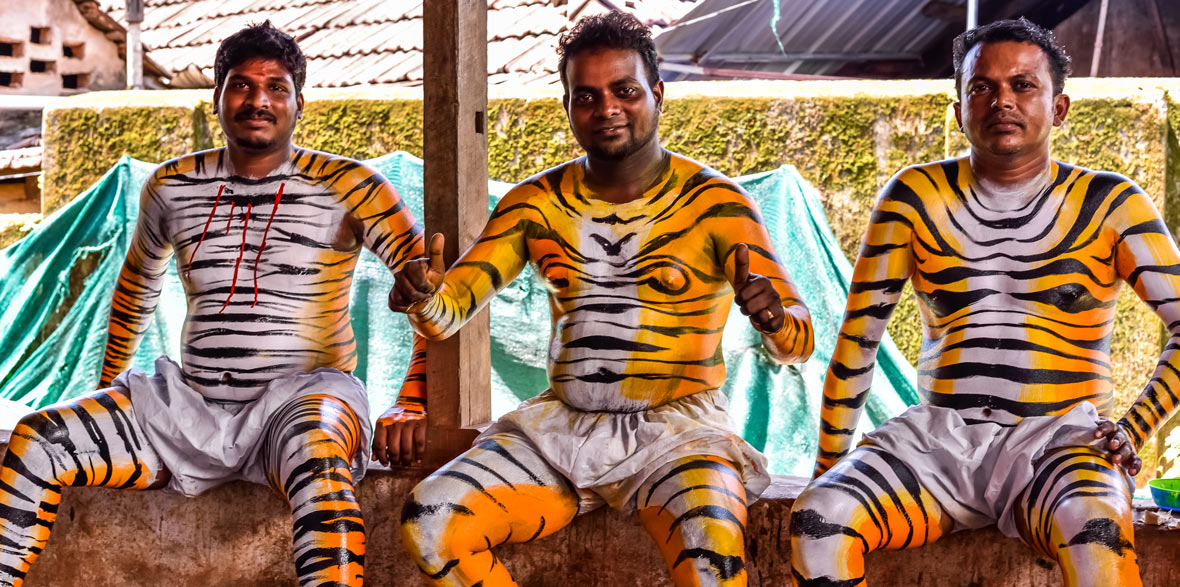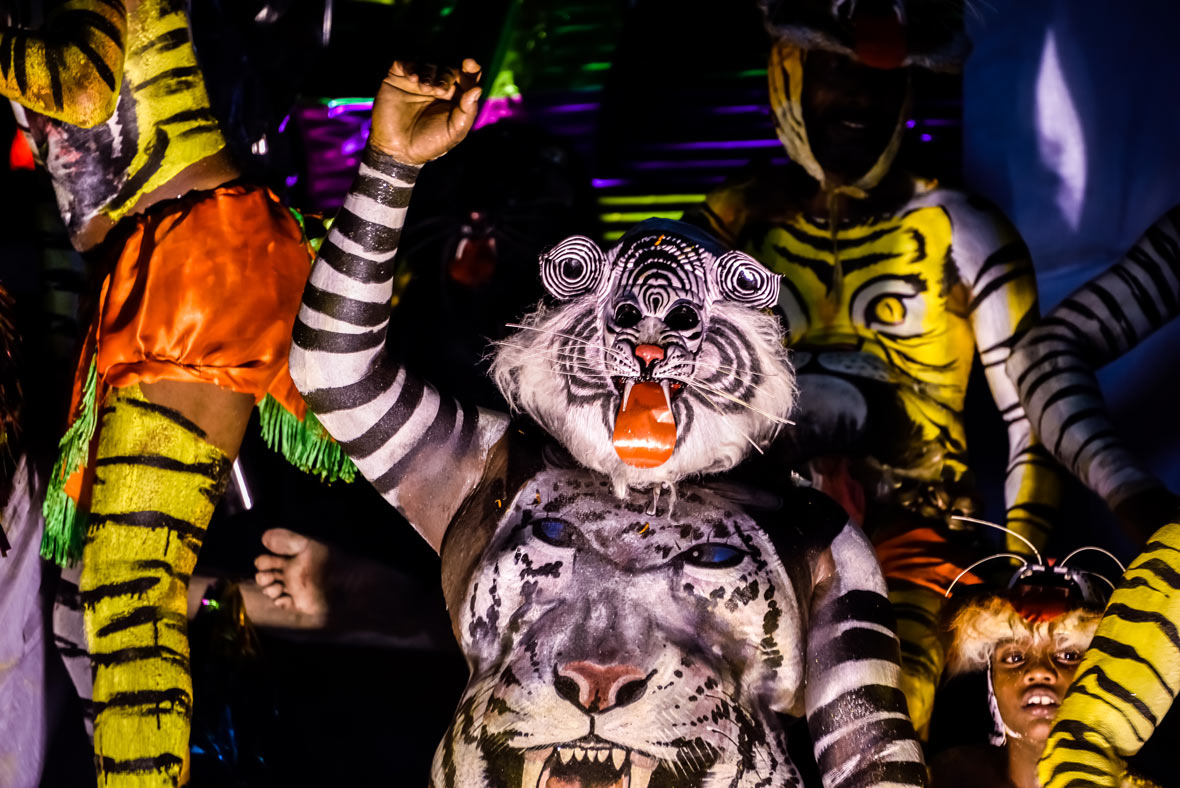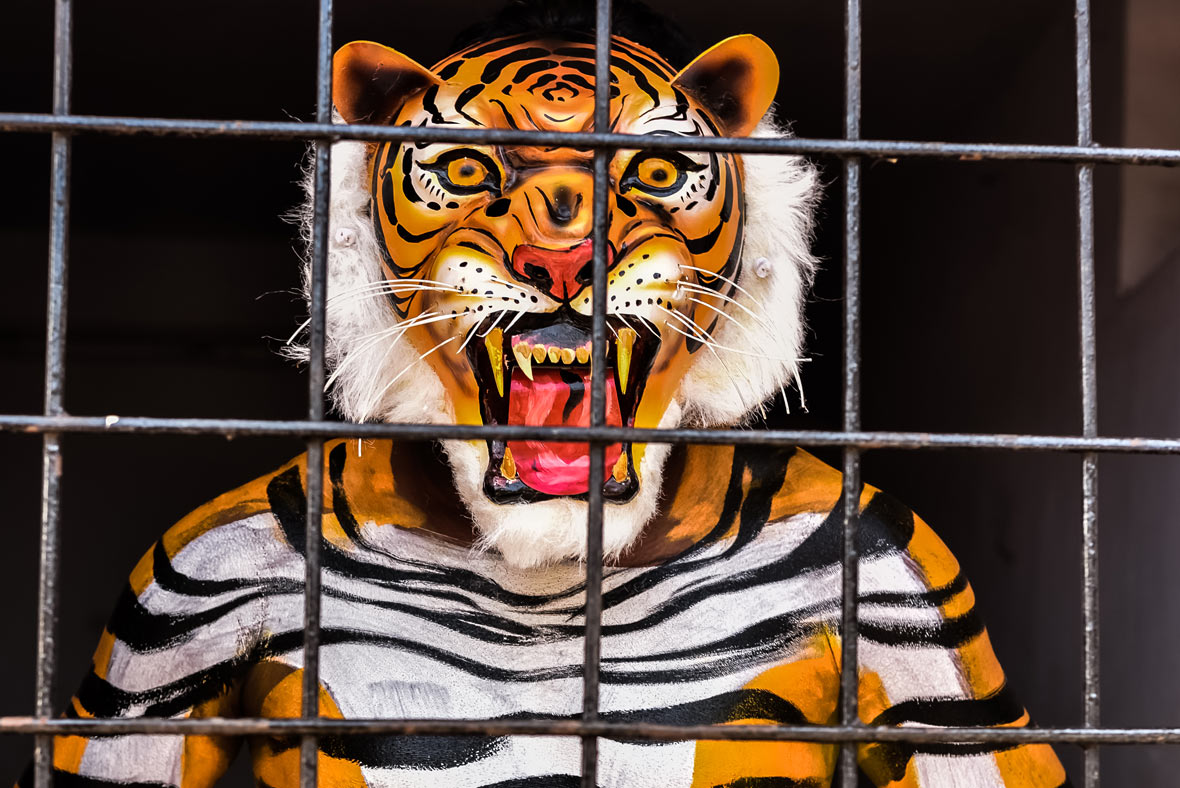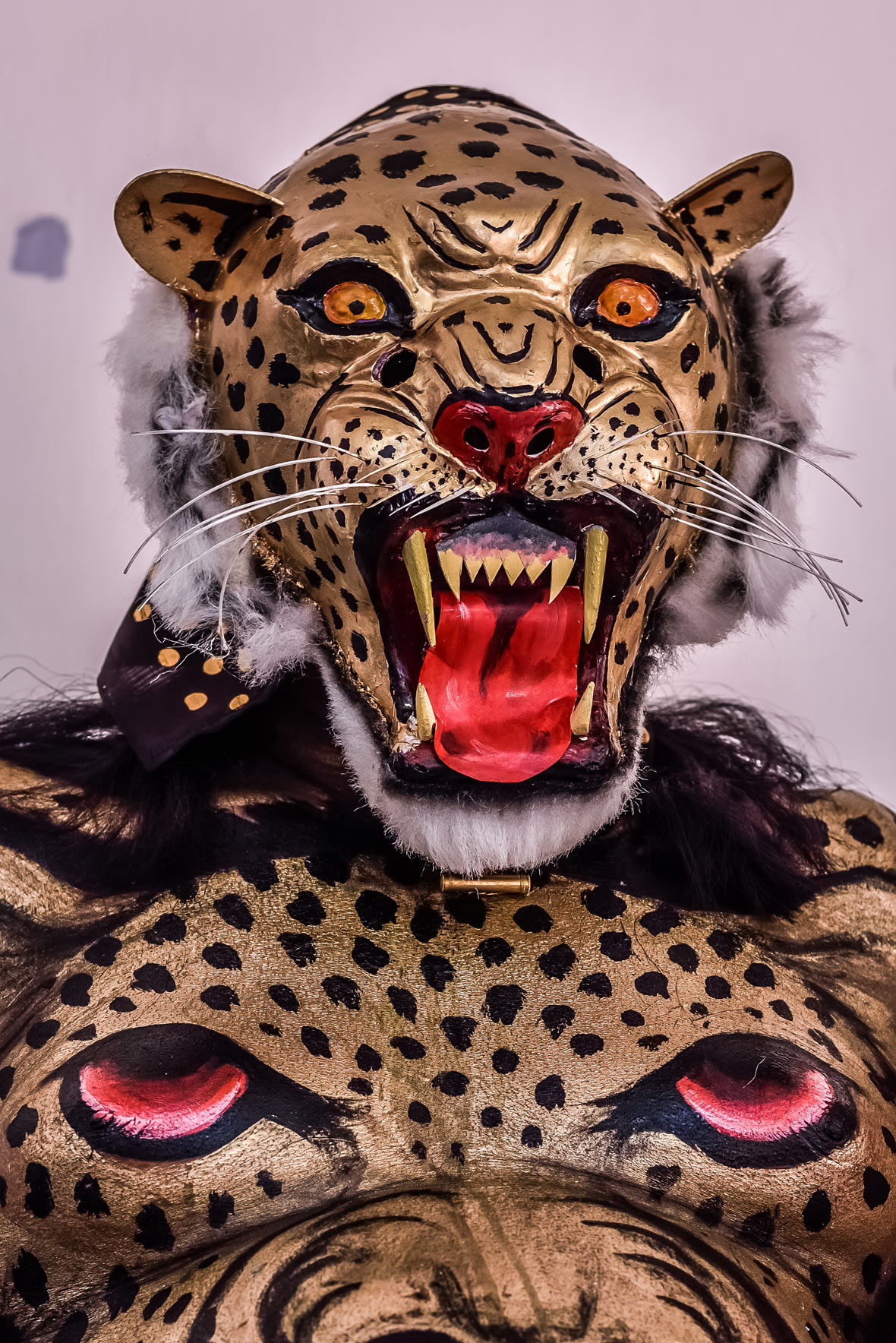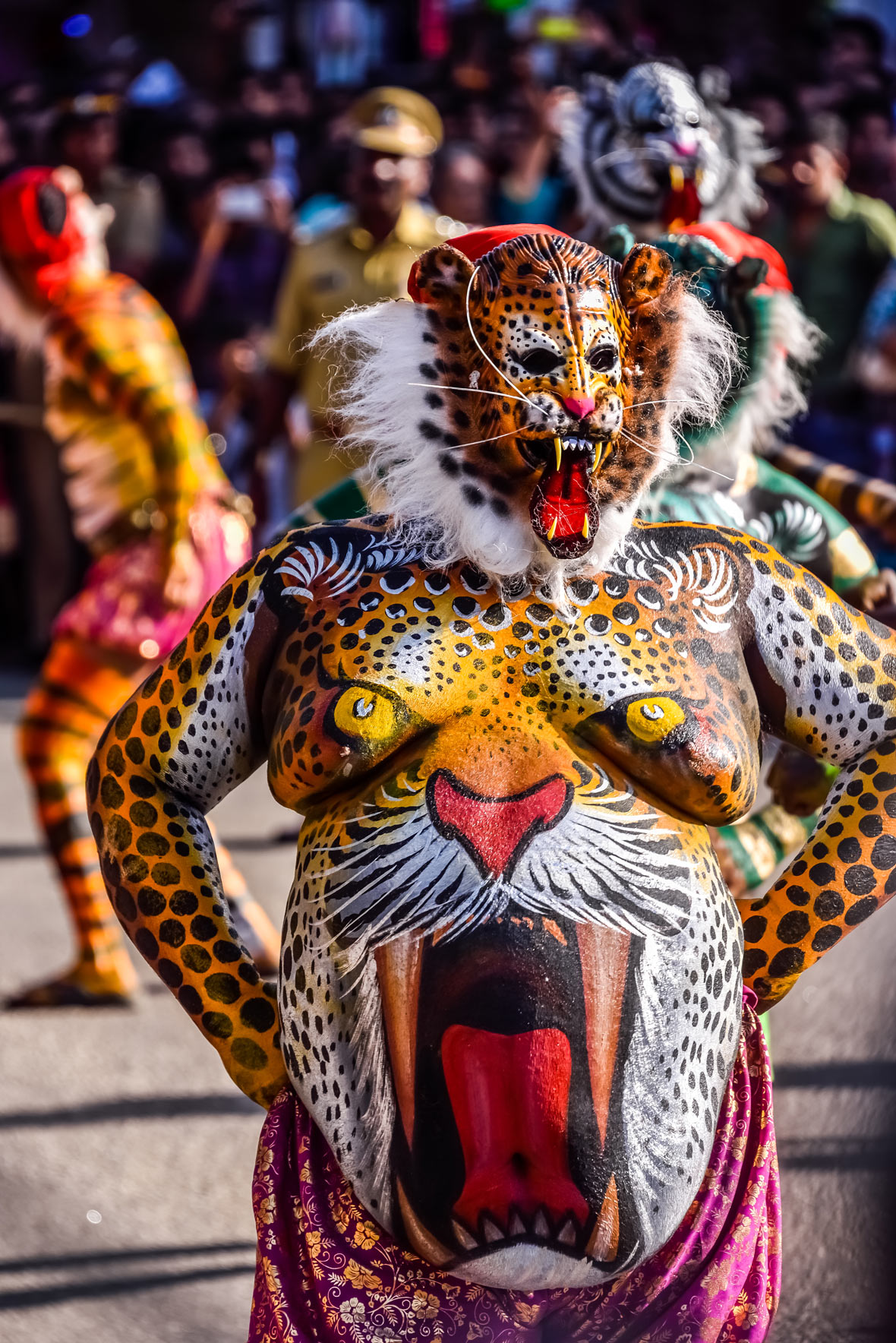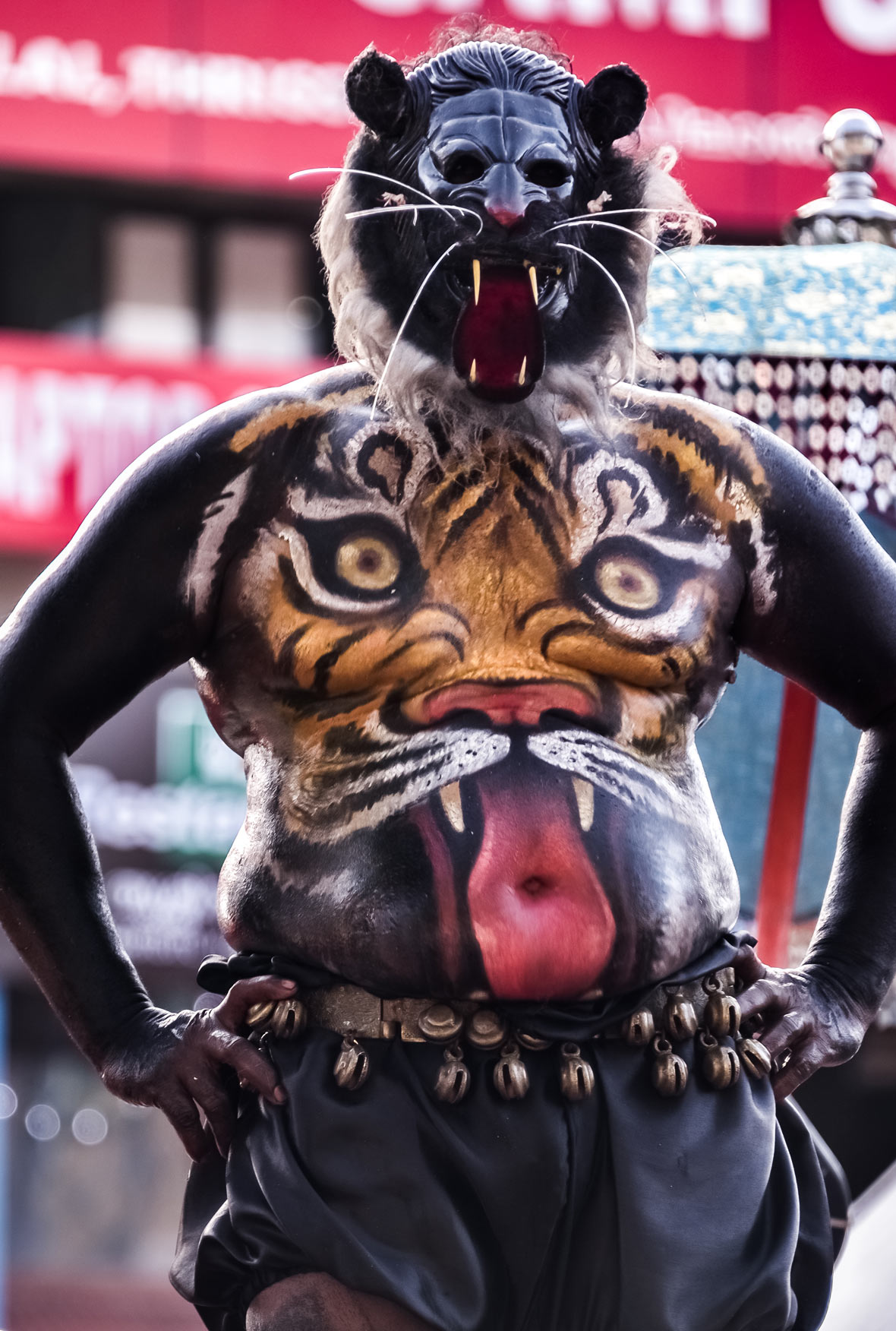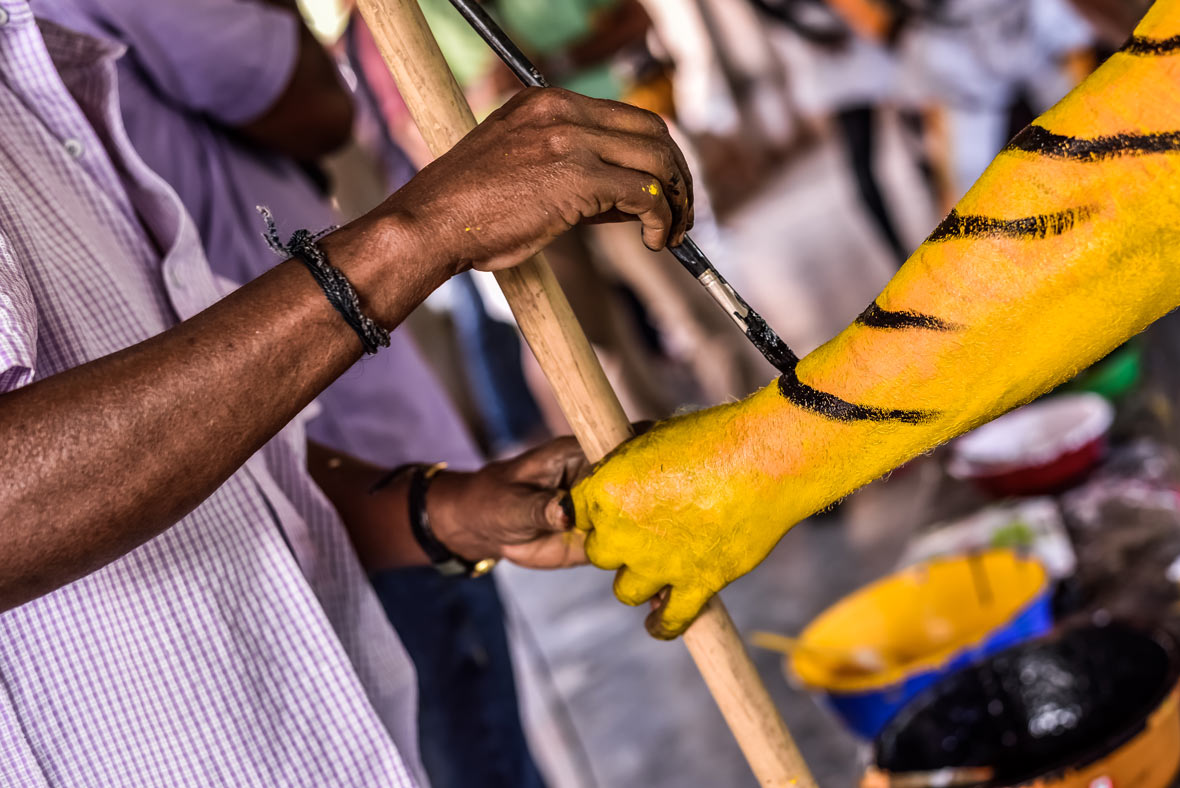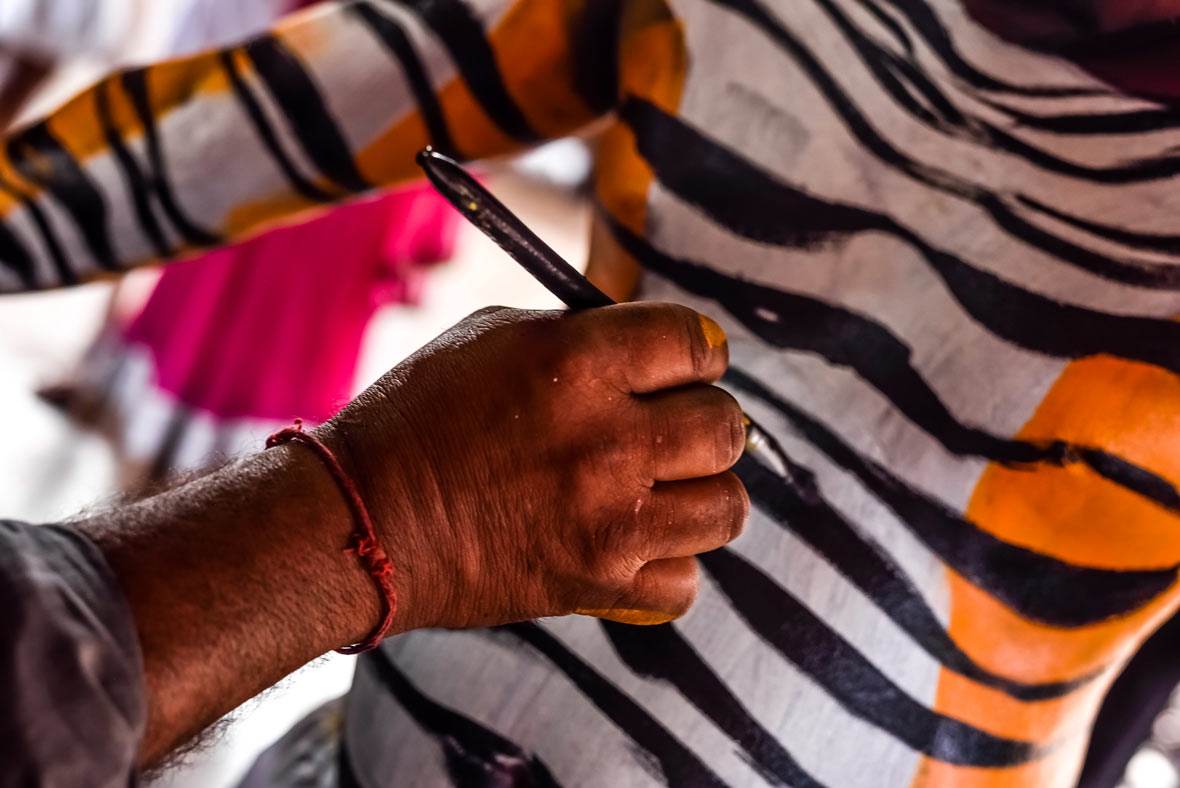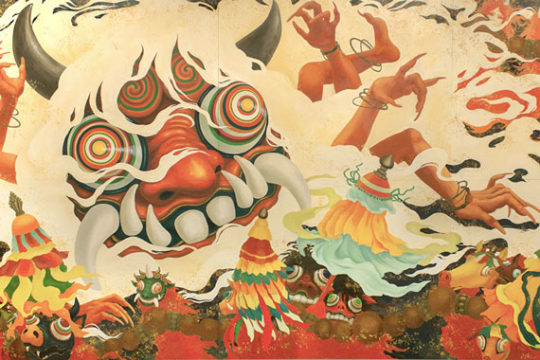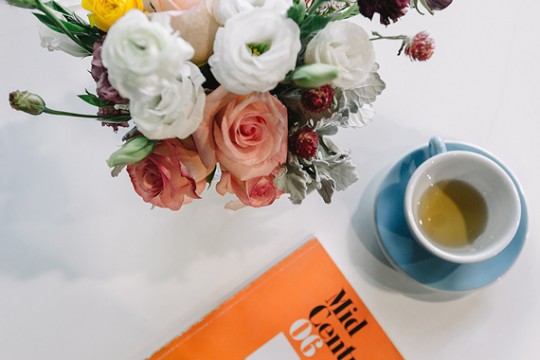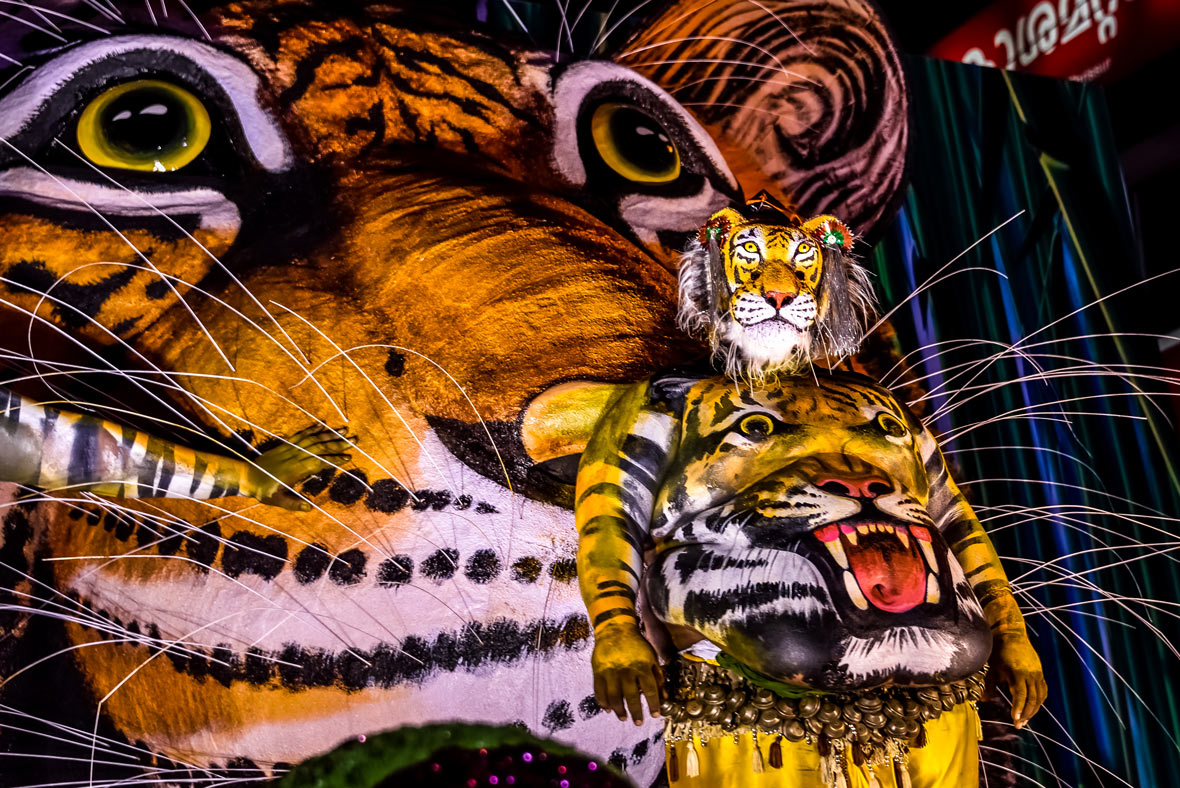
Onam is one of the biggest and most important festivals in Kerala, India. The annual harvest festival spans ten days, with different celebrations and performances taking place on each day, including boat races, martial arts, music, dance, and more. Of these festivities, one of the most visually extravagant is Pulikkali, a traditional folk art known as the tiger dance.
欧南(Onam)节是印度喀拉拉邦最盛大和最重要的节日之一。这个一年一度的丰收节日为期十天,每天都会举办不同的庆祝活动和表演,包括赛艇、武术、音乐、舞蹈等。在这些庆祝活动中,最具视觉冲击力的是传统民间艺术 Pulikkali 舞蹈, 也被称为“老虎舞”。
Pulikkali is believed to have been introduced by the King of Cochin, Maharaja Rama Varma Sakthan Thampuran, over two centuries ago. It began as a celebration of bravery and the spirit of battle. Today, it’s become an essential part of Onam. On the fourth day of the festival, hundreds of portly men are covered in vibrant paint, many with their pot bellies transformed into the face of a ferocious tiger. Throughout the day, they roam the streets, performing a feral dance to the rhythm of traditional percussions as thousands of onlookers cheer in delight.
相传,“老虎舞” Pulikkali 是两个世纪前由科钦(Cochin)国王 Maharaja Rama Varma Sakthan Thampuran 引入的,最初是一种赞颂勇敢与战斗精神的庆祝表演。而现在,“老虎舞” 已经成为欧南节的重要组成部分。在节日的第四日,数百名身材魁梧的男子在身上涂满色彩鲜艳的图案,在肚皮上画上凶猛的虎脸。一整天,他们走到街上,在成千上万旁观者的喝彩声中,随着传统打击乐的节奏表演狂野的舞蹈。
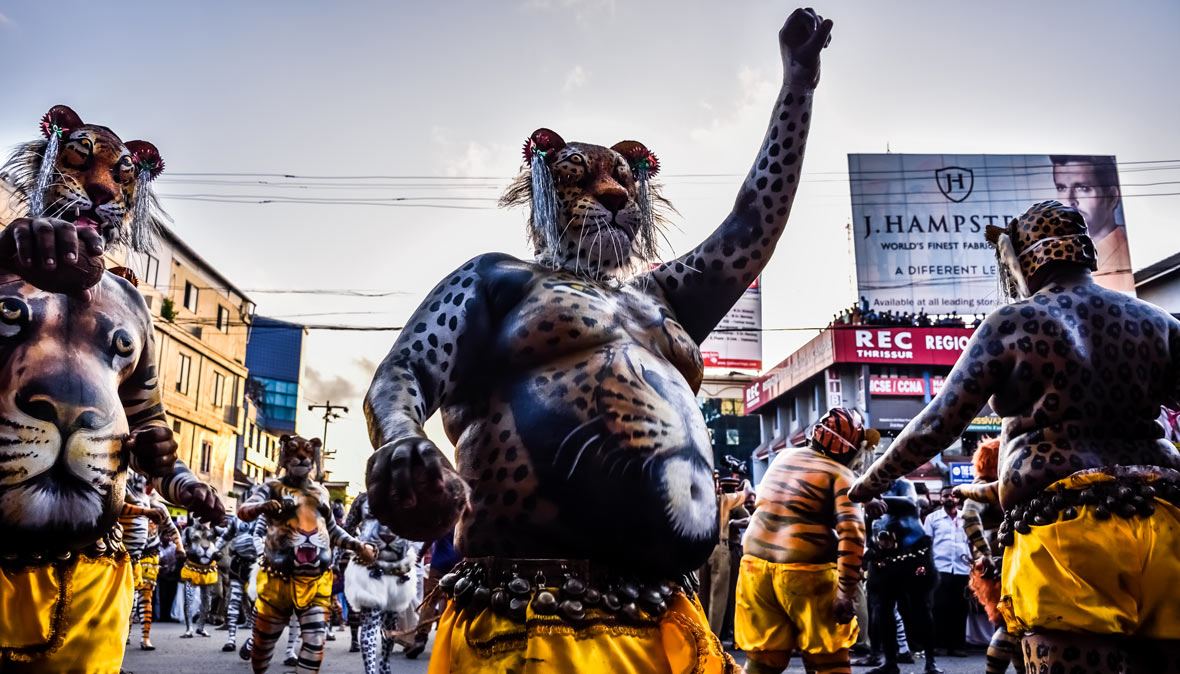
While the performance receives widespread attention and praise, the preparation efforts by artists and performers are often overlooked. Painting each performer is a painstaking process that can take up to seven hours. Even before applying the first coat of paint, all hair must first be shaved from the performers’ bodies. Then, once the first layer of paint is applied, there’s a three-hour wait for it to dry before tiger stripes and other finishing touches are drawn on.
尽管“老虎舞”受到了人们广泛的关注和称赞,但艺术家和表演者的前期准备工作却常常为人忽略。单是为每一名表演者画上身体彩绘就可能需要长达 7 个小时的工作。在涂上第一层颜料之前,他们要先将表演者身体上的所有毛发剃掉。上完第一层颜料后,需要等三个小时的时间让颜料干燥,然后再画上虎纹和其它最后的润色。
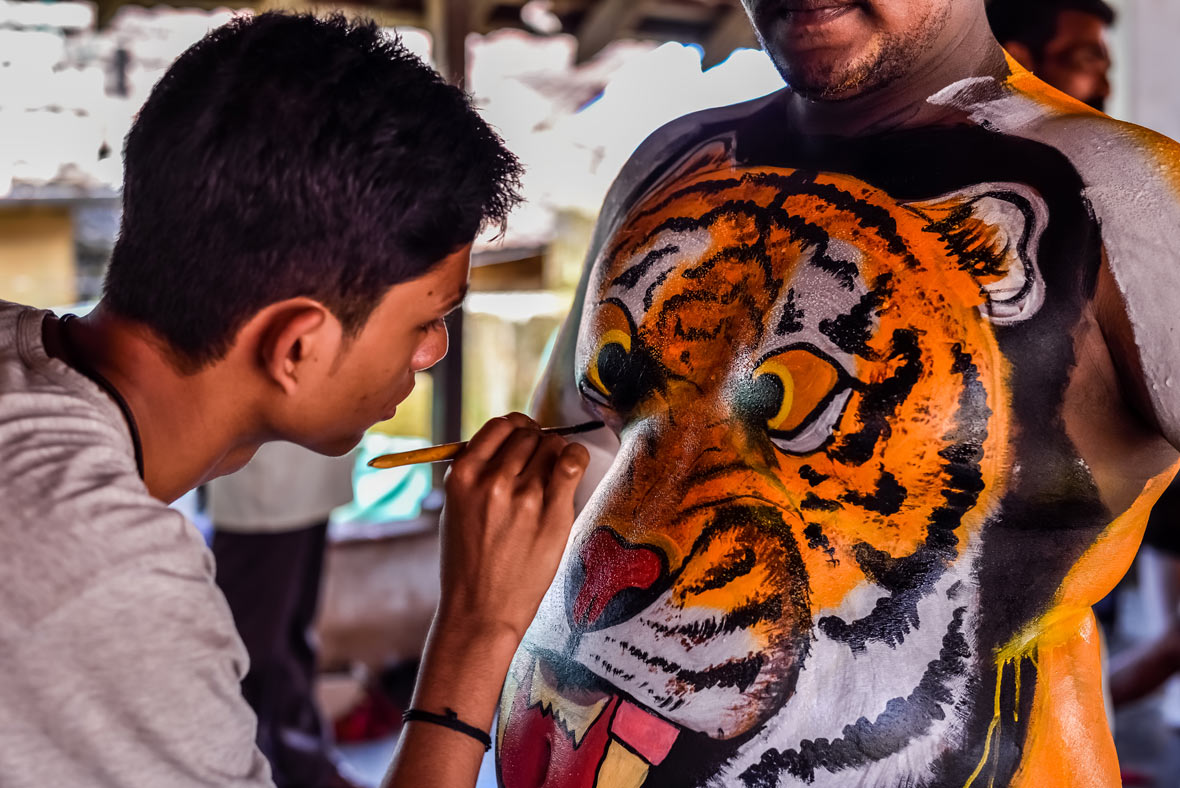
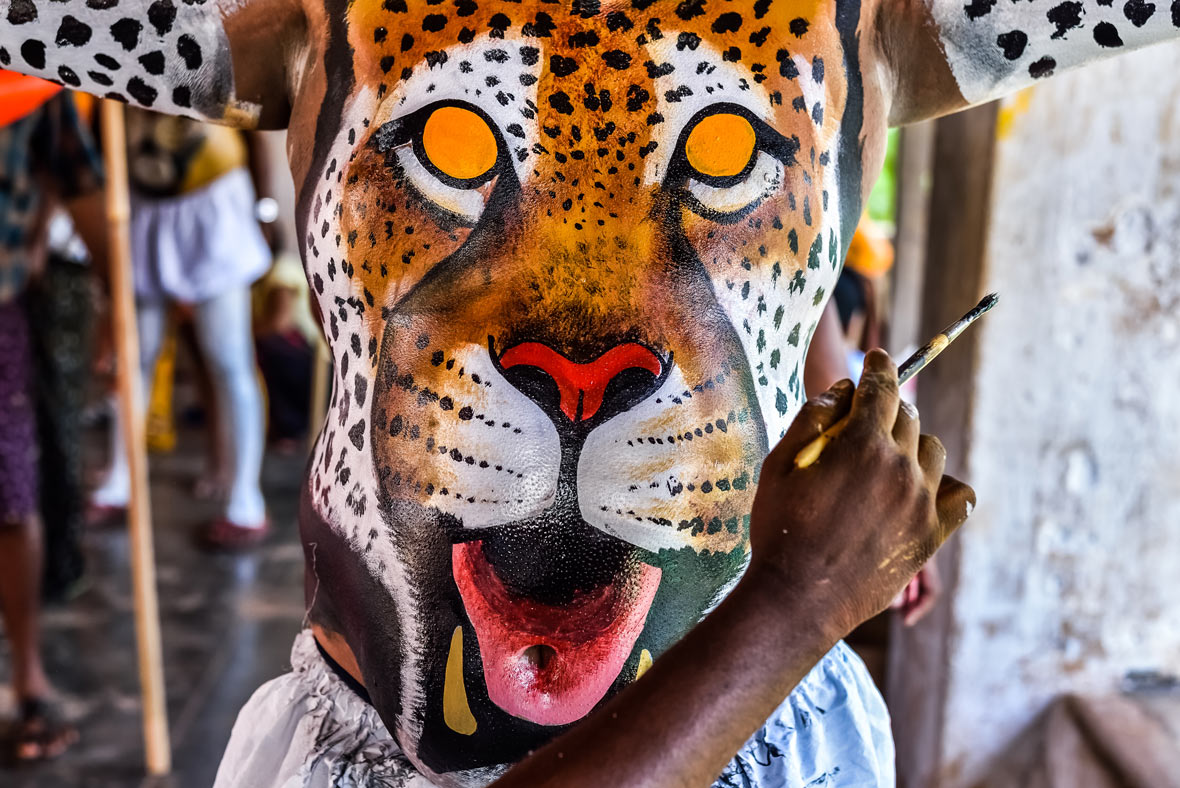
For all participants, it’s a long, tiring day that begins early in the morning and lasts until late. What makes all the hard work worthwhile is a shared understanding of how their efforts are contributing to keeping this traditional art form alive.
对于所有参与者来说,这是漫长而疲惫的一天,因为要从清晨一直忙到深夜。 而正是他们的努力,使这种传统艺术形式得以流传,也让这项工作变得更有意义。
